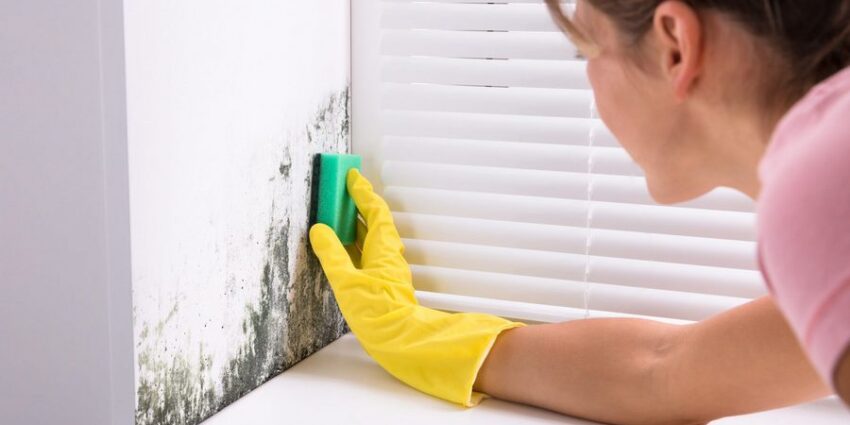Mold is a plaque formed by mold fungi on various surfaces. Spores of fungal mold in the house actively reproduce in conditions of high humidity, which is facilitated by:
Low-quality insulation of inter-panel seams,
Poor ventilation in the toilet, bathroom, and kitchen,
Improper installation of windows,
Later switching on or premature switching off of heating,
Poor waterproofing of the foundation.
Penetrating deep into the surfaces, fungi not only spoil the room’s aesthetics but also contribute to causing several diseases in humans, such as bronchial asthma, allergies, and eczema. Therefore, it is highly recommended to keep your house clean with the services of a reputed hygiene cleaning company for all kinds of cleaning, including regular kitchen hood cleaning and HVAC cleaning.
How Dangerous Is Mold, And How Does It Affect Human Health?
Spores of mold fungi are contained in the air in fairly large quantities but do not manifest themselves in any way. Their reproduction is possible only when exposed to certain conditions – a moist and warm environment. When invisible and harmless particles become visible to the naked eye, they are easy to guess by the black, white, blue, or green coating on various surfaces of walls, ceilings, and window slopes.
With a small concentration of mold, it is difficult to assess the damage it can cause. However, if the problem is not solved in time, it can cause irreparable damage to human health.
Mold can cause toxic intoxication. Penetrating the digestive system, mold causes serious disorders of the gastrointestinal tract. Affecting the mucous membrane, it becomes the cause of allergic reactions. Direct infection with spores through tactile contact is especially dangerous for people with poor immunity.
On the body, prolonged exposure to mold fungi results in serious pathological abnormalities, such as respiratory tract damage, mucous membrane irritation, and dermatological illnesses.
How To Remove Mold From The Wall At Home?
Mold multiplies at different speeds on different surfaces. There are also other methods of combating it.
Oil paint
On the material devoid of pores, the fungus does not spread in-depth but along the perimeter of the surface. In the presence of a powerful antifungal agent, mold can be removed from the paint without resorting to the need to repaint the surface.
Wallpaper
The mold spreads instantly on the wallpaper. Considering the complexity of processing such surfaces with liquid solutions, it is often necessary to re-glue the affected areas.
Drywall, Brick, Concrete
The porous structure of the listed building materials provokes the spread of mold deep into the surface. With a timely response to the problem, the fungus can be eliminated with special household chemicals.
How To Prevent Mold On Walls?
Fungus and mold can cause problems, cause allergic reactions, and other equally dangerous diseases. Meanwhile, there are several rules to avoid such a problem.
Ventilation and air circulation prevent the appearance of humidity and mustiness on the premises. That is why the kitchen and bathroom should be equipped with high-quality ventilation.
Furniture should be placed far from the walls to provide air access.
Keeping your bathroom door open will help prevent condensation and mold growth.
Unfortunately, some factors that can stimulate the appearance of fungus and mold are difficult to correct. You should not despair. Regular use of special detergents and high-quality cleaning prevent problems and eliminate them. Before cleaning mold at home, remember to use personal protective equipment. Furthermore, you can also acquire the services of a professional mold removal company to make your house walls mold-free for an extended period.

I don’t think the title of your article matches the content lol. Just kidding, mainly because I had some doubts after reading the article.